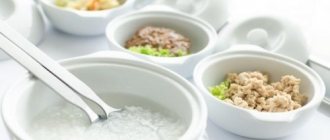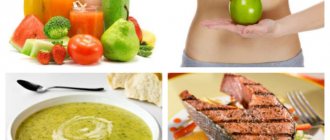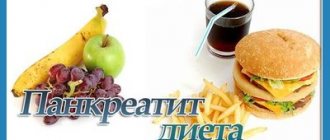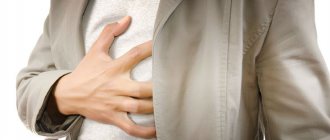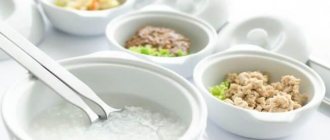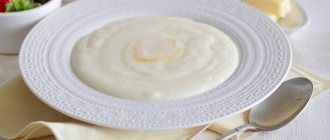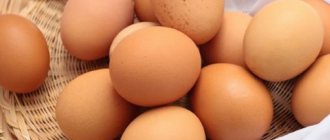Many patients look forward to operations to close a colostomy, because then a person has the opportunity to live a normal life again and relieve his needs with the help of an anus located not on the stomach, but in the right place. But from the closure of the colostomy to the normalization of stool elimination processes, a long rehabilitation period will have to go through, and the functionality of the large intestine will be established.
What to expect from such an operation and when the recovery period will end can be found in the article below.
General rules
An intestinal stoma is an artificial opening that is created on the surface of the skin of the anterior abdominal wall. The unclosed end of the intestine is removed and secured into it to remove feces. A stoma to remove stool from the colon is called a colostomy .
It is always located above the problem area of the intestine and is carried out in cases where further movement of feces is impossible. Colostomy is not performed unless absolutely necessary; it is done if:
- oncological diseases of the intestine;
- complicated diverticulitis (inflammatory processes with abscesses, scars, abnormal narrowing of the intestinal lumen);
- congenital defects of the colon;
- injuries;
- Crohn's disease;
- nonspecific ulcerative colitis.
Depending on the pathology that caused the need for a stoma, it can be temporary or permanent.
Eating with a colostomy does not differ much from regular nutrition, since the stoma is a different version of the anus, and it does not affect the quality of the stool. The formation of feces depends on the function of the entire intestine. In this condition, you need to monitor the effect of foods on digestion. After a few months, the patient adapts to selecting those products that do not cause discomfort.
In the first days after surgery, the most gentle nutrition is recommended within the framework of surgical Diets No. 0A , 0B , 0B . This is liquid and semi-liquid food, and from the fourth day - jelly-like and pureed. They start eating with rice water, jelly, compotes, weak low-fat broth, expanding the diet to pureed porridges, broths with semolina, steamed omelettes and meat/fish puree. At home, they switch to dietary nutrition within Table No. 4B , which is carried out for up to 1.5 months. It includes pureed porridge with broth, milk or water, steamed cutlets from lean meats, soups with pureed or finely chopped vegetables, cereals, cottage cheese, pureed vegetable dishes.
After discharge with a functioning colostomy, patients need to:
- Monitor your diet, since diarrhea and constipation have an adverse effect on the condition of the artificial orifice. The patient himself must determine foods and dishes that do not cause discomfort and stool disturbances. It should be taken into account that fatty foods, rye bread, green beans, fresh and dried fruits, spinach, cucumbers, fresh fruits, prunes, figs, nuts, beans, lentils, salads with mayonnaise, spicy dishes with seasonings, cereal breakfast cereals have a laxative effect. , coffee, fruit juice, milk. The following have a fixing effect: rice broth, quince, blueberry jelly, mashed potatoes, hard cheeses, bananas, an abundance of animal proteins in the diet, mashed potatoes, noodles, pasta and any dough products (pancakes, pancakes, dumplings, dumplings), cottage cheese, flour baking and muffins, strong tea.
- Chew food thoroughly and do not skip meals.
- It is better to take a larger amount of food in the morning and at lunch, and dinner should be light and long before bedtime.
- The diet for intestinal ostomy should not contain foods that cause gas formation. These are products with a large amount of plant fiber (nuts, legumes, cabbage, grapes, raisins, mushrooms, onions, root vegetables, asparagus), carbonated drinks (kvass, beer, kumiss, carbonated waters) and fresh yeast baked goods, chocolate.
- Avoid foods that significantly increase the smell of feces - fish, garlic, onions, eggs, spices and seasonings. On the contrary, the following can weaken it: eating spinach, yogurt, parsley, any kind of salad, lingonberry juice.
- Take enough liquid - at least 1.5 liters.
- Prepare dishes without salt and add it to ready-made dishes.
After 1.5 months, the diet for a colostomy expands and a transition to the person’s usual diet is possible, but foods that cause bloating are still excluded. It is better to eat food up to 5 times a day, adhering to the regime and not overloading the digestive system. Proper combination of products, avoiding the use of incompatible ones, will help avoid unpleasant and unforeseen situations.
After closing the colostomy, which, depending on the patient’s condition, is carried out 3-6 months after the first intervention (sometimes earlier), the patient’s diet should be more gentle. During reconstructive operations (methods may be different), the previous continuity of the intestine and the passage of feces in a natural way are restored.
Adhesions and scars can create difficulties. In this case, intestinal patency is restored gradually and at first the patient should consume only liquid food, gradually moving to a more extensive diet. While the intestines do not function in a normal rhythm, the patient may be recommended hydromassage of the non-functioning part of the intestines and anal gymnastics.
Phased nutrition after closure of the stoma involves a gradual expansion of the diet:
- Boiled pureed dishes are gradually replaced by not pureed, but well chopped.
- You are not allowed to eat fruits and vegetables for several months. After 3 months you should switch to baked and boiled vegetables/fruits, and raw ones only after six months. These terms are approximate, and in each specific case they are discussed with the doctor.
- Each new product is introduced gradually and its effect on intestinal motility is assessed.
- The patient must identify foods that increase peristalsis and slow it down.
How to prepare for reconstructive surgery to remove a stoma?
The period in which it is optimal to carry out reconstructive surgery after a stoma is 2-4 months after its formation. Sometimes, according to indications, it can be extended to a year, but currently doctors have experience in successfully performing reconstructive surgery after an ostomy after 10 or more years. However, the more time has passed since the formation of the stoma, the higher the risk of complications, and the longer it will take to restore the intestines’ ability to remove feces naturally. The reason is a decrease in muscle tone of both the intestinal stump, the pelvic floor, and the anal sphincter. There is also a risk of developing structural changes in the intestine.
Preparation for reconstructive surgery begins with a thorough examination, which includes:
- Colonoscopy or irrigoscopy;
- Colonography;
- Computer or magnetic resonance imaging of the pelvis and abdominal cavity;
- Chest X-ray;
- Assessment of the preservation of the functions of the anal canal and sphincter.
In the preparatory period, the patient needs to prepare for changes in his life due to temporary loss of working capacity and some other social functions.
Authorized Products
After the stoma is closed, meals are organized within Table No. 4B . The length of stay on it depends on the state of health and is agreed with the doctor - usually 1.5-2 months. After this, the diet expands and includes non-processed dishes recommended by Therapeutic Diet No. 4B . This diet option is varied and complete, so it can be used constantly. This nutritional option is most suitable for patients with constipation because it contains more dietary fiber.
- Mashed and then unmashed porridges (buckwheat, oatmeal, rice - avoid if you have constipation), which can be cooked in water, with the addition of milk or broth.
- Soups with weak broth. Cereals and vegetables approved by the doctor are first wiped, and then simply kneaded and chopped. Vegetables can include potatoes, pumpkin, zucchini, carrots and, if tolerated, cauliflower. To increase calorie content and add flavor, boiled minced meat, meatballs, tender quenelles or egg flakes are added to first courses.
- Boiled or steamed dishes from minced meat and fish - pates, soufflés, steamed cutlets, meatballs, quenelles.
- Dried wheat bread, stale biscuits, low-fat cookies. The timing of their introduction into the diet is determined by the doctor.
- Boiled and pureed vegetables, you can eat vegetable puree, steamed vegetable cutlets with the addition of semolina. Gradually switch to eating chopped vegetables.
- Fermented milk products, milk, low-fat sour cream and cream are consumed if tolerated. It is better to use milk only in dishes. Low-fat cottage cheese is allowed and should be present in the diet daily. To give it a liquid consistency, add kefir or milk.
- Among the drinks, patients are allowed rosehip infusion, cocoa in water (a little milk is fine), weak tea, juices diluted with water (apple, pumpkin, cherry, strawberry, carrot), rosehip decoction. The consumption of juices is approached carefully and strictly individually.
Table of permitted products
| Proteins, g | Fats, g | Carbohydrates, g | Calories, kcal | |
Vegetables and greens | ||||
| zucchini | 0,6 | 0,3 | 4,6 | 24 |
| cabbage | 1,8 | 0,1 | 4,7 | 27 |
| cauliflower | 2,5 | 0,3 | 5,4 | 30 |
| potato | 2,0 | 0,4 | 18,1 | 80 |
| carrot | 1,3 | 0,1 | 6,9 | 32 |
| parsley | 3,7 | 0,4 | 7,6 | 47 |
| beet | 1,5 | 0,1 | 8,8 | 40 |
| dill | 2,5 | 0,5 | 6,3 | 38 |
| green beans | 2,8 | 0,4 | 8,4 | 47 |
Fruits | ||||
| quince | 0,6 | 0,5 | 9,8 | 40 |
| oranges | 0,9 | 0,2 | 8,1 | 36 |
| pomegranate | 0,9 | 0,0 | 13,9 | 52 |
| pears | 0,4 | 0,3 | 10,9 | 42 |
| dogwood | 1,0 | 0,0 | 10,5 | 44 |
| tangerines | 0,8 | 0,2 | 7,5 | 33 |
| apples | 0,4 | 0,4 | 9,8 | 47 |
Berries | ||||
| blueberry | 1,1 | 0,4 | 7,6 | 44 |
Nuts and dried fruits | ||||
| dried pears | 2,3 | 0,6 | 62,6 | 249 |
Cereals and porridges | ||||
| buckwheat (kernel) | 12,6 | 3,3 | 62,1 | 313 |
| semolina | 10,3 | 1,0 | 73,3 | 328 |
| oat groats | 12,3 | 6,1 | 59,5 | 342 |
| cereals | 11,9 | 7,2 | 69,3 | 366 |
| white rice | 6,7 | 0,7 | 78,9 | 344 |
Flour and pasta | ||||
| pasta | 10,4 | 1,1 | 69,7 | 337 |
| milk pasta | 11,5 | 2,9 | 67,1 | 345 |
| noodles | 12,0 | 3,7 | 60,1 | 322 |
Bakery products | ||||
| white bread crackers | 11,2 | 1,4 | 72,2 | 331 |
Confectionery | ||||
| jam | 0,3 | 0,2 | 63,0 | 263 |
| jam | 0,3 | 0,1 | 56,0 | 238 |
| marshmallows | 0,8 | 0,0 | 78,5 | 304 |
| fruit and berry marmalade | 0,4 | 0,0 | 76,6 | 293 |
| meringues | 2,6 | 20,8 | 60,5 | 440 |
| paste | 0,5 | 0,0 | 80,8 | 310 |
| Maria cookies | 8,7 | 8,8 | 70,9 | 400 |
Raw materials and seasonings | ||||
| dried bird cherry | 8,4 | 0,0 | 16,8 | 101 |
Dairy | ||||
| skim milk | 2,0 | 0,1 | 4,8 | 31 |
| sour cream | 2,8 | 20,0 | 3,2 | 206 |
| acidophilus | 2,8 | 3,2 | 3,8 | 57 |
Cheeses and cottage cheese | ||||
| cheese | 24,1 | 29,5 | 0,3 | 363 |
| cottage cheese 0.6% (low fat) | 18,0 | 0,6 | 1,8 | 88 |
Meat products | ||||
| boiled beef | 25,8 | 16,8 | 0,0 | 254 |
| boiled veal | 30,7 | 0,9 | 0,0 | 131 |
| rabbit | 21,0 | 8,0 | 0,0 | 156 |
Bird | ||||
| boiled chicken | 25,2 | 7,4 | 0,0 | 170 |
| turkey | 19,2 | 0,7 | 0,0 | 84 |
Fish and seafood | ||||
| Red caviar | 32,0 | 15,0 | 0,0 | 263 |
| black caviar | 28,0 | 9,7 | 0,0 | 203 |
Oils and fats | ||||
| butter | 0,5 | 82,5 | 0,8 | 748 |
Non-alcoholic drinks | ||||
| mineral water | 0,0 | 0,0 | 0,0 | — |
| green tea | 0,0 | 0,0 | 0,0 | — |
| black tea | 20,0 | 5,1 | 6,9 | 152 |
Juices and compotes | ||||
| Orange juice | 0,9 | 0,2 | 8,1 | 36 |
| Cherry juice | 0,7 | 0,0 | 10,2 | 47 |
| Strawberry juice | 0,6 | 0,4 | 7,0 | 31 |
| tangerine juice | 0,8 | 0,3 | 8,1 | 36 |
| carrot juice | 1,1 | 0,1 | 6,4 | 28 |
| tomato juice | 1,1 | 0,2 | 3,8 | 21 |
| pumpkin juice | 0,0 | 0,0 | 9,0 | 38 |
| Apple juice | 0,4 | 0,4 | 9,8 | 42 |
| * data is per 100 g of product | ||||
What happens after stoma removal surgery?
Typically, the patient is discharged from the clinic three to ten days after the reconstructive surgery after the stoma - the exact period depends on the pace of recovery.
This should not be expected to mean complete restoration of normal bowel movements. As already mentioned above, for this there must be a period of rehabilitation, and active rehabilitation, with the efforts of the patient himself and his relatives.
The following points need to be taken into account:
- The defecation regime is set individually, but as a rule, in the early postoperative period it is far from normal. For example, there may be imperative urges - that is, urgent ones. Episodes of fecal incontinence may occur (6-8 weeks after surgery). You need to be prepared for this.
- Stool often has a looser consistency than usual, and its release may be accompanied by uncontrollable flatulence.
- In connection with the above, some restrictions are introduced during rehabilitation: you cannot drive a car for about six weeks after surgery, avoid physical activity for 10 months, etc.
All described disorders and unpleasant symptoms are transient, subsequently the body adapts, control over intestinal functions is restored, restrictions are removed completely or remain minimal.
After the operation, the patient is under the control of specialists from the Medical Institute of Gastroenterology, who teach him the correct behavior during the recovery period, prescribe a diet, and also give a number of recommendations to speed up rehabilitation.
So, in order to quickly restore the intestines and its functions, it is recommended:
- Intestinal hydromassage;
- Drug therapy;
- Diet therapy.
Diet therapy in this case plays a crucial role; the duration of the recovery period largely depends on how seriously the patient takes the diet.
get a treatment plan
Fully or partially limited products
- Strong secretion stimulants - strong and fatty broths, strong coffee.
- Products and dishes that increase bloating, putrefactive and fermentation processes - legumes, beer, vegetables with coarse fiber, rye and bran bread, fresh baked goods, kvass, sparkling water.
- Animal fats, margarine, vegetable oil are excluded for diarrhea.
- Spicy dishes, fatty meats, smoked meats, poultry, fatty sauces, canned meat and fish, mustard, horseradish, pepper, prepared meat products.
- Products with essential oils - garlic, onion, basil, celery, radish, radish, turnip.
- Coarse and difficult to digest cereals: millet, pearl barley, barley, corn, cooking fat, pork and beef, margarine, vegetable oil.
- The consumption of ice cream, chocolate, cakes, pastries, carbonated drinks, grape, apricot, citrus juices, and kvass is prohibited.
Table of prohibited products
| Proteins, g | Fats, g | Carbohydrates, g | Calories, kcal | |
Vegetables and greens | ||||
| vegetables legumes | 9,1 | 1,6 | 27,0 | 168 |
| swede | 1,2 | 0,1 | 7,7 | 37 |
| cucumbers | 0,8 | 0,1 | 2,8 | 15 |
| parsnip | 1,4 | 0,5 | 9,2 | 47 |
| parsley (root) | 1,5 | 0,6 | 10,1 | 49 |
| radish | 1,2 | 0,1 | 3,4 | 19 |
| white radish | 1,4 | 0,0 | 4,1 | 21 |
| turnip | 1,5 | 0,1 | 6,2 | 30 |
| celery | 0,9 | 0,1 | 2,1 | 12 |
| horseradish | 3,2 | 0,4 | 10,5 | 56 |
| garlic | 6,5 | 0,5 | 29,9 | 143 |
| spinach | 2,9 | 0,3 | 2,0 | 22 |
| sorrel | 1,5 | 0,3 | 2,9 | 19 |
Fruits | ||||
| bananas | 1,5 | 0,2 | 21,8 | 95 |
| melon | 0,6 | 0,3 | 7,4 | 33 |
Berries | ||||
| grape | 0,6 | 0,2 | 16,8 | 65 |
Mushrooms | ||||
| mushrooms | 3,5 | 2,0 | 2,5 | 30 |
Nuts and dried fruits | ||||
| dried fruits | 2,3 | 0,6 | 68,2 | 286 |
Cereals and porridges | ||||
| pearl barley | 9,3 | 1,1 | 73,7 | 320 |
| Wheat groats | 11,5 | 1,3 | 62,0 | 316 |
| millet cereal | 11,5 | 3,3 | 69,3 | 348 |
| barley grits | 10,4 | 1,3 | 66,3 | 324 |
Flour and pasta | ||||
| pasta | 10,4 | 1,1 | 69,7 | 337 |
Bakery products | ||||
| vysivkovy bread | 9,0 | 2,2 | 36,0 | 217 |
| Old Russian grain bread | 9,6 | 2,7 | 47,1 | 252 |
| Rye bread | 6,6 | 1,2 | 34,2 | 165 |
Confectionery | ||||
| candies | 4,3 | 19,8 | 67,5 | 453 |
| cookie | 7,5 | 11,8 | 74,9 | 417 |
| Kurabye cookies | 6,7 | 25,8 | 64,6 | 516 |
| butter cookies | 10,4 | 5,2 | 76,8 | 458 |
Ice cream | ||||
| ice cream | 3,7 | 6,9 | 22,1 | 189 |
Cakes | ||||
| cake | 4,4 | 23,4 | 45,2 | 407 |
Raw materials and seasonings | ||||
| seasonings | 7,0 | 1,9 | 26,0 | 149 |
| mustard | 5,7 | 6,4 | 22,0 | 162 |
Meat products | ||||
| pork | 16,0 | 21,6 | 0,0 | 259 |
Sausages | ||||
| dry-cured sausage | 24,1 | 38,3 | 1,0 | 455 |
Bird | ||||
| duck | 16,5 | 61,2 | 0,0 | 346 |
| goose | 16,1 | 33,3 | 0,0 | 364 |
Fish and seafood | ||||
| dried fish | 17,5 | 4,6 | 0,0 | 139 |
| smoked fish | 26,8 | 9,9 | 0,0 | 196 |
| canned fish | 17,5 | 2,0 | 0,0 | 88 |
Oils and fats | ||||
| vegetable oil | 0,0 | 99,0 | 0,0 | 899 |
| animal fat | 0,0 | 99,7 | 0,0 | 897 |
| cooking fat | 0,0 | 99,7 | 0,0 | 897 |
Non-alcoholic drinks | ||||
| bread kvass | 0,2 | 0,0 | 5,2 | 27 |
Juices and compotes | ||||
| apricot juice | 0,9 | 0,1 | 9,0 | 38 |
| grape juice | 0,3 | 0,0 | 14,0 | 54 |
| plum juice | 0,8 | 0,0 | 9,6 | 39 |
| * data is per 100 g of product | ||||
Training the muscles of the pelvic diaphragm and rectum after surgery
One of the consequences of the stoma is the inevitable weakening of the muscles of the pelvic floor, rectum and anal sphincter, and the longer the stoma has been in place, the more pronounced the muscular dystonia. Its consequence is the most unpleasant symptom that patients have to experience in the postoperative period: fecal incontinence.
In order to restore muscle tone, special exercises are prescribed to strengthen the pelvic floor and sphincter, such as Kegel exercises. The attending physician will help you master them, and the patient must approach their implementation with full responsibility. Such exercises can reduce the unpleasant period of loss of control over bowel movements from several months to several weeks.
Menu (Power Mode)
The menu at this table is gradually expanding and becoming varied. After a while, you can not only boil and stew foods, but also bake them. With 6 meals a day, the diet should include a variety of meat, fish and vegetable dishes. If milk is well tolerated, breakfast can consist of various milk porridges. In the absence of diarrhea, vegetable and fruit dishes can be consumed at every meal. Every other day or daily, egg dishes are introduced.
| Breakfast |
|
| Lunch |
|
| Dinner |
|
| Afternoon snack |
|
| Dinner |
|
| For the night |
|
| Breakfast |
|
| Lunch |
|
| Dinner |
|
| Afternoon snack |
|
| Dinner |
|
| For the night |
|
| Breakfast |
|
| Lunch |
|
| Dinner |
|
| Afternoon snack |
|
| Dinner |
|
| For the night |
|
Is symptom control necessary after stoma removal?
In order to control symptoms, patients are usually recommended to keep a food diary: note the time of food intake, what exactly was eaten, then the intestinal reaction, indicating the time of this reaction. In this way, the patient learns to control the activity of his intestines, select the optimal foods and their combinations, and identify those foods whose consumption should be limited or eliminated completely. This allows you to create an individual diet that will best contribute to the rehabilitation of this particular patient.
In some cases, the patient may be prescribed drug therapy aimed at regulating intestinal function: antidiarrheals or drugs that increase the volume of stool. Medicines are selected by the attending physician in such a way that the patient can gain control over the symptoms while avoiding side effects.
Reviews and results
The nutrition of the main table is balanced and this allows you to use it constantly without intestinal discomfort. According to patient reviews, it sometimes took 3-4 weeks to create an optimal diet. There are also certain difficulties associated with individual cooking. However, many people constantly adhere to it and do not consider themselves disadvantaged in any way.
- “... I had colon cancer, the tumor was removed and a stoma was formed. After 4 months, reconstruction surgery was performed. While I was with her, the food was normal, with the exception of rough, fried and junk food. After closing the hole, the power changed. In the first month, the doctor recommended eating everything pureed, ground and soft. Mostly there were soups, minced meat, pureed porridge. It was forbidden to eat apples, fresh vegetables and fruits, as well as grapes. Only after 1.5 months I began to try soft fresh fruits, and after 4.5 months I was already eating everything. True, the process of selecting products was difficult. Now everything is fine, I go to the doctor every six months”;
- “... After the tumor was removed, my mother had a colostomy, and after two months she could have reconstructive surgery. Now he is constantly on a diet, especially the first 3 months, since the non-functional intestine took a long time to recover. There was constipation, and with more vegetables, it became weaker. At this time, I tried to eat only boiled and steamed food, and new dishes were introduced gradually in small portions. Thus, within a month we found foods that were acceptable for her and finally created a diet.”
Cost of reconstructive surgery to remove a stoma
When calculating the price of treatment in Israel, including this type of surgery, it is important to understand that it may depend on a number of factors, such as the course of the primary disease, the age of the patient, etc.
Today, the price of an operation to remove a stoma (colostomy) in Israel is more than $ 3,500 . However, at the stage of preparation for the intervention, the patient may need additional diagnostic procedures, assistance in rehabilitation, etc. These factors may also affect the cost of treatment in Israel.
Life with a stoma
The medical and pharmaceutical industries pay enough attention to ostomy patients, regularly improving bags and colostomy bags, providing special dressings, ointments and films to protect the skin surrounding the stoma.
Often, to stop the complication, it is enough to change the brand of tracheostomy tube or colostomy bag, but the patient suffers because the doctor did not advise him to do so. Many people learn how to optimally care for their stoma on their own - through trial and error, deprived of the opportunity to receive professional medical advice for the trivial reason - insufficient time for a detailed conversation with the attending physician.
In our clinic, we spend as much time communicating with the patient as the clinical situation and the patient’s wishes require. We know what needs to be done so that the patient has fewer problems with the stoma; we teach our patients how to properly care for the stoma and live with it without unnecessary restrictions.
Book a consultation 24 hours a day
+7+7+78
Bibliography:
- Vorobyov G.I., Tsarkov P.V. /Fundamentals of intestinal ostomy surgery// -M: Publishing house. Capital City; 2002.
- Vorobyov G.I., Tsarkov P.V., Sukhanov V.G. and others / Issues of organizing the rehabilitation service for ostomy patients // Coloproctology; 2005, No. 2 (12).
- Shelygin Yu.A., Blagodarny L.A. /Handbook of coloproctology// -M: Publishing house. "Literra"; 2012.
- Cottam J., Richards K., Hasted A., Blackman A. / Results of a nationwide prospective audit of stoma complications within 3 weeks of surgery// Colorectal Disease; 2007, 9 (9).
- Marquis P., Marrel A., Jambon B. / Quality of life in patients with stomas: The Montreux Study // Ostomy Wound Management; 2003, 49(2).
Colostomy bags
Typically, patients with a colostomy use special bags called colostomy bags. Colostomy bags are designed to collect stool. They can be of different designs, disposable and reusable. The bag has a round base that adheres to the skin around the colostomy. Disposable bags are thrown away once filled. When using reusable colostomy bags, they are washed from feces and attached back. Reusable bags cause less damage to the skin when glued for a long time. Some colostomy bags are equipped with special deodorants to absorb the unpleasant odor that is uncontrollably released from the stoma opening.
You can also use a colostomy band with a hole. It is intended for the prevention of hernia in the stoma area. The bandage supports the abdominal wall after surgery. The colostomy opening usually has standard sizes or can be customized.
Patients can always contact specialists at the Yusupov Hospital for advice on the need for a colostomy, as well as methods of caring for it. The hospital employs experienced oncologists, surgeons, rehabilitation specialists, and nutritionists who provide treatment and postoperative therapy for patients with intestinal pathologies and cancer.
You can make an appointment with a specialist and get information about the work of clinics and the diagnostic center by calling the Yusupov Hospital.
Indications for ostomy
For any type of stoma, the leading indication is the need to restore the patency of the anatomical path in a slightly modified form. Another thing is that most often the root cause of blocking the patency of a hollow internal organ is a malignant tumor.
Benign diseases and injuries less often lead to the need for ostomy; for example, multiple diverticula require removal of a large extent of the colon.
Structure - scar narrowing of the ureter due to urolithiasis or after irradiation of the retroperitoneal region, larynx after injury, stomach after a burn or intestines as a result of adhesive disease, can also become the basis for the formation of a bypass with the help of a stoma.
Even less often, a stoma is applied for an auxiliary purpose - to carry out therapeutic measures, temporarily excluding the anatomical area from the function, for example, a tracheostomy is made if long-term mechanical ventilation is necessary.

